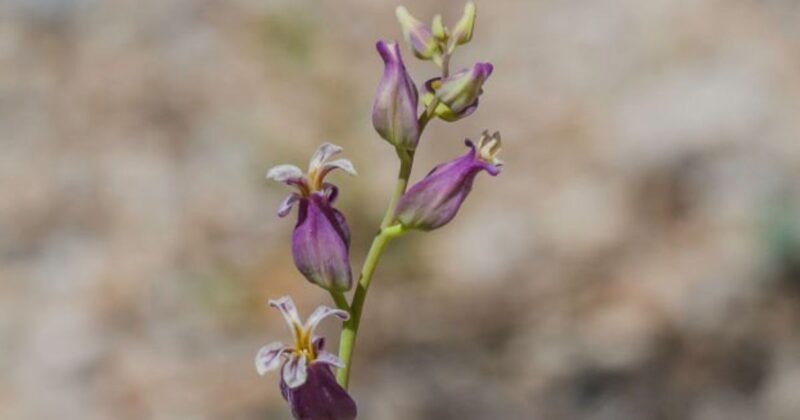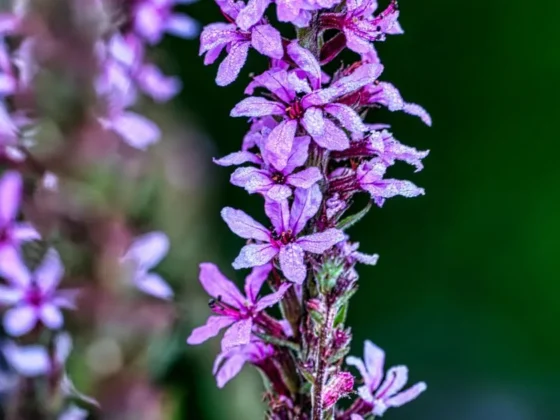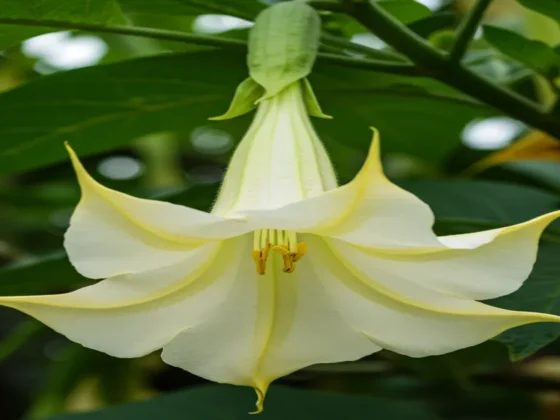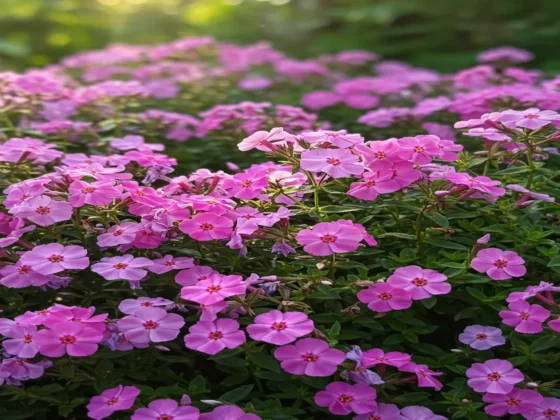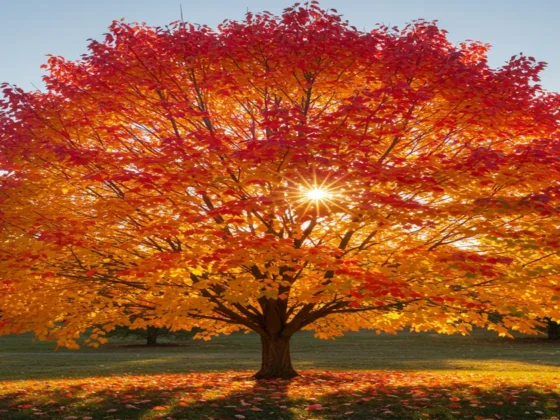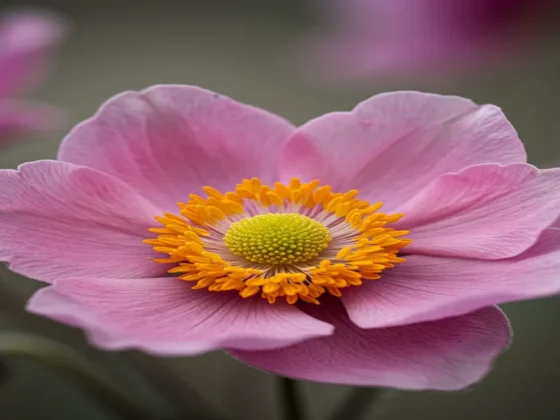The mountain jewel plant, known scientifically as Streptanthus tortuosus, is a fascinating find in alpine ecosystems. It captures the interest of botanists and nature lovers with its unique traits and role in the environment.
Learning about the mountain jewel plant starts with its important role in high places. Streptanthus tortuosus grows well in tough mountain areas. It shows amazing strength and complexity, making it stand out among other plants.
Looking into this special plant gives us a peek into how it survives over time. Its unique features help scientists learn about plant evolution and how plants interact with their surroundings.
What Is the Mountain Jewel Plant ?
The mountain jewel plant, known scientifically as streptanthus tortuosus, is a botanical wonder. It thrives in the harsh conditions of mountains. This plant’s ability to adapt is fascinating to botanists and nature lovers.
What Makes Streptanthus Tortuosus Unique ?
Streptanthus tortuosus is part of the mustard family (Brassicaceae). It has unique features that set it apart. These include:
- Compact growth pattern
- Specialized root systems
- Unique flower structures
- Remarkable environmental adaptability
Natural Habitat Overview
The mountain jewel plant loves rocky, high places. It grows between 4,000 and 10,000 feet above sea level. This is where the environment is toughest.
| Habitat Characteristic | Specific Details |
|---|---|
| Elevation Range | 4,000 – 10,000 feet |
| Soil Type | Rocky, well-drained terrain |
| Climate Zone | Alpine and subalpine regions |
Significance in Alpine Ecosystems
The streptanthus tortuosus is vital in mountain ecosystems. It helps hold soil together and provides homes for small creatures. It also shows incredible strength in harsh conditions.
Historical Background and Discovery
The mountain jewel plant was first discovered in the late 19th century. It was found in the alpine regions of western North America. Researchers were amazed by its ability to survive and its unique features.
Early botanists were fascinated by its resilience and distinct characteristics. These traits made it stand out among other plants in mountainous areas.
Key milestones in the mountain jewel plant’s history include:
- Initial scientific classification in 1879 by prominent botanists exploring California’s mountain ranges
- First comprehensive botanical study published in 1892 detailing its ecological significance
- Systematic documentation of genetic variations across different alpine environments
By the early 20th century, scientists were studying the mountain jewel plant more closely. They mapped its spread, studied its genes, and learned about its importance in preserving alpine ecosystems. The plant’s survival strategies were a focus of research.
Pioneering botanists were impressed by the plant’s ability to thrive in harsh conditions. Their detailed work helped start conservation efforts. It also helped us understand how plants adapt to high-altitude environments.
Physical Characteristics and Morphology
The streptanthus tortuosus is a unique alpine plant. It has special features that help it survive in tough mountain areas. Knowing about its physical traits gives us a peek into how it manages to thrive.
Distinctive Leaf Structure and Arrangement
Streptanthus tortuosus has leaves that are unlike most alpine plants. Its leaves are:
- Irregular blade-like shapes
- Varying sizes ranging from 2-10 cm in length
- Dense clustering around stem regions
- Waxy surface texture for moisture retention
Remarkable Flower Characteristics
The flowers of streptanthus tortuosus are truly special. They come in a wide range of colors and shapes, often with:
- Small, delicate petals
- Purple to lavender color spectrum
- Clustered inflorescence patterns
- High pollinator attraction potential
Root System Development
The root system of streptanthus tortuosus is key to its survival. It has a vast underground network with:
| Root Feature | Characteristic | Adaptive Significance |
|---|---|---|
| Depth | 15-30 cm | Enhanced nutrient absorption |
| Branching | Highly complex | Increased soil stability |
| Density | High concentration | Water conservation |
Natural Distribution and Range
The mountain jewel plant, known scientifically as Streptanthus tortuosus, grows in western North America’s mountain ecosystems. Its ability to thrive in tough alpine environments is fascinating.
It can be found in:
- California mountain ranges
- Oregon’s Cascade Mountains
- Washington state’s higher elevation zones
- Rocky Mountain regions of Colorado
Altitude is key for the mountain jewel plant’s survival. They grow between 4,000 and 10,000 feet. This shows their amazing ability to adapt.
Climate change affects the mountain jewel plant’s home. Studies show it’s changing where they live.
| Region | Typical Elevation Range | Predominant Climate |
|---|---|---|
| California Sierra Nevada | 5,000-9,500 feet | Alpine/Subalpine |
| Pacific Northwest | 4,500-8,000 feet | Cool Temperate |
| Rocky Mountain Region | 6,000-10,000 feet | Montane |
Knowing where the mountain jewel plant lives helps scientists protect these special plants.
Growing Conditions and Requirements
To grow the mountain jewel plant, or streptanthus tortuosus, you need to know its special needs. This rare alpine species needs specific growing conditions that match its natural home.
Soil Preferences
Streptanthus tortuosus loves well-drained, rocky soils with little organic matter. The best soil has:
- pH range between 6.0 and 7.5
- Gravelly or sandy substrate
- Low nutrient content
- Excellent drainage capabilities
Climate Requirements
The alpine environment is perfect for streptanthus tortuosus. Your plant will do best in areas with:
- Cool to moderate temperatures
- Significant temperature fluctuations
- Low humidity levels
Light and Water Needs
Getting light and water right is key for growing streptanthus tortuosus. Keep these points in mind:
| Growing Factor | Recommended Conditions |
|---|---|
| Sunlight Exposure | Partial shade to full sun |
| Watering Frequency | Minimal, drought-tolerant |
| Moisture Tolerance | Low to moderate |
Pro tip: Mimic the plant’s native mountain ecosystem for optimal growth and health.
Seasonal Growth Patterns
The mountain jewel plant has a special way of growing in the mountains. Its growth cycle is unique and shows how it can thrive in tough environments. This makes it fascinating for both scientists and plant lovers.
Every year, the mountain jewel plant goes through different growth stages. These stages are key to its survival in the mountains:
- Spring Emergence: Delicate shoots break through alpine soil
- Summer Flowering: Vibrant blossoms attract pollinators
- Autumn Seed Production: Critical reproductive phase
- Winter Dormancy: Underground survival mechanism
In spring, the mountain jewel plant starts growing with great accuracy. The right temperature and light start its growth. This is when the roots and stems begin to develop.
| Season | Growth Characteristics | Environmental Adaptation |
|---|---|---|
| Spring | Initial shoot emergence | Rapid nutrient absorption |
| Summer | Peak flowering period | Maximum photosynthetic activity |
| Autumn | Seed development | Energy conservation |
| Winter | Dormant root system | Minimal metabolic processes |
Climate change could mess with these delicate growth patterns. This could harm the mountain jewel plant’s balance in nature.
Mountain Jewel Plant Propagation Methods
Propagating streptanthus tortuosus needs careful attention and specific techniques. Understanding its delicate reproductive processes is key to successful cultivation.
Seed Collection Techniques
Collecting seeds from streptanthus tortuosus requires precision and timing. Harvest seeds in late summer or early autumn. Seed pods should be fully mature but not yet split.
- Wait until seed pods turn brown and feel dry
- Use clean, sharp scissors for collection
- Collect seeds during dry, cool morning hours
- Store seeds in paper envelopes in cool, dark locations
Germination Process
The germination of streptanthus tortuosus seeds needs specific conditions. Seed viability depends on temperature, moisture, and light.
| Germination Factor | Optimal Conditions |
|---|---|
| Temperature Range | 55-65°F (13-18°C) |
| Soil pH | 6.0-7.5 |
| Moisture Level | Consistently moist, not waterlogged |
| Light Requirement | Partial shade |
Transplanting Guidelines
When transplanting streptanthus tortuosus, gentle handling is crucial. Young seedlings need careful management for successful establishment.
- Prepare transplant site with well-draining soil
- Minimize root disturbance during relocation
- Water thoroughly after transplanting
- Protect young plants from direct, intense sunlight
Conservation Status and Threats
The mountain jewel plant is facing big challenges. Its survival is at risk due to environmental pressures. Researchers have found several key factors that threaten its future.
- Habitat fragmentation reducing population density
- Climate change altering alpine ecosystem conditions
- Limited genetic diversity within mountain jewel plant populations
- Increased human intervention in natural landscapes
Experts say the mountain jewel plant is a significant ecological concern. Many threats are affecting its natural habitats.
| Threat Category | Impact Level | Primary Risk Factors |
|---|---|---|
| Climate Disruption | High | Temperature shifts, reduced snowpack |
| Habitat Loss | Medium | Urban expansion, agricultural development |
| Genetic Vulnerability | Low | Reduced reproductive capabilities |
It’s vital to keep an eye on the mountain jewel plant and work to save it. Research teams are coming up with new ways to fight extinction.
Cultural and Historical Significance
The streptanthus tortuosus has a deep cultural meaning in alpine areas. It has captured the hearts of local communities for many years. This plant is more than just a plant; it’s a symbol of nature’s strength and traditional wisdom.
Traditional Indigenous Uses
Indigenous people have always valued the streptanthus tortuosus. They use it in many ways:
- Medicinal preparations for treating minor ailments
- Natural dye production for textiles
- Ceremonial decorations during seasonal celebrations
- Herbal remedies for digestive support
Local Alpine Folklore
Mountain communities have stories about the streptanthus tortuosus. They see it as a protector of the mountains. It stands for strength and the ability to adapt.
The plant’s ability to survive harsh conditions has inspired many stories. These stories teach about resilience, survival, and natural wisdom.
Spiritual and Cultural Connections
The streptanthus tortuosus is also spiritually important. For some, it connects human experiences with nature. It represents change and the power to endure.
Research and Scientific Studies
Scientists are deeply studying the mountain jewel plant to uncover its secrets. They aim to learn about its special traits and how to protect it.
Key research areas for the mountain jewel plant include:
- Genetic diversity analysis
- Climate change impact assessment
- Habitat resilience investigation
- Ecological interaction studies
Researchers from many universities are working hard on the mountain jewel plant. Dr. Sarah Rodriguez from the Alpine Botanical Research Center is leading the way. She’s studying the plant’s genes and how it survives.
Current studies are looking into several important areas:
- Molecular genetic mapping
- Population dynamics tracking
- Environmental stress response mechanisms
- Potential medicinal properties exploration
As research goes on, we learn more about the mountain jewel plant. It shows how adaptable and important it is in alpine ecosystems.
Modern Conservation Efforts
Streptanthus tortuosus needs careful conservation to protect its alpine home. Experts have come up with new ways to save this special mountain plant.
Protection Measures
Teams are working hard to keep streptanthus tortuosus safe. They’re using important strategies like:
- Setting up protected wilderness areas
- Creating laws to keep habitats safe
- Limiting human activities in sensitive places
Rehabilitation Programs
Rehabilitation efforts are showing great promise. Scientists are working on:
- Storing seeds to keep genetic diversity
- Fixing damaged mountain habitats
- Watching how populations grow
Future Conservation Strategies
Keeping streptanthus tortuosus safe for the long term needs teamwork. It involves science, community help, and flexible management plans.
| Conservation Strategy | Implementation Goal |
|---|---|
| Genetic Diversity Preservation | Maintain strong population health |
| Habitat Restoration | Make more places for the plant to grow |
| Public Education | Get more people involved and supportive |
By mixing science with community help, we can ensure a bright future for this amazing mountain plant.
Conclusion
The mountain jewel plant, known as streptanthus tortuosus, shows how strong alpine ecosystems are. Now, you see it’s more than just a plant. It’s a story of survival and importance in nature.
Protecting streptanthus tortuosus is key. By learning about its home, growth, and challenges, we help save many species. This plant is a key sign of how well alpine areas are doing.
You can help by sharing what you know about this amazing plant. Join local groups, help with research, and support green practices. This will help keep streptanthus tortuosus and other alpine plants safe.
As we learn more and protect these areas, the mountain jewel plant shows us nature’s beauty and strength. Your efforts can help keep these special plants alive for others to see.
FAQ
What is the scientific name of the mountain jewel plant ?
The mountain jewel plant is known scientifically as Streptanthus tortuosus. This name helps botanists identify and study this unique alpine plant.
Where can you typically find the mountain jewel plant ?
You’ll find Streptanthus tortuosus in alpine and subalpine regions. It grows in western North America’s mountain ranges. It thrives in rocky, well-drained areas at high elevations.
Is the mountain jewel plant endangered ?
The mountain jewel plant is not universally endangered. But, it faces threats from climate change and habitat disruption. Conservation efforts aim to protect its populations in alpine ecosystems.
How do you propagate the mountain jewel plant ?
Propagation of Streptanthus tortuosus mainly involves seed collection and germination. It needs specific conditions like proper soil, temperature, and moisture. Seed collection happens during its flowering and seed production season.
What are the unique characteristics of the mountain jewel plant ?
The mountain jewel plant has unique features. It has adapted leaf structures and compact growth. Its flowers are specialized for alpine environments. It survives harsh conditions with robust roots and leaves.
Can you grow a mountain jewel plant in a home garden ?
Growing Streptanthus tortuosus in a home garden is challenging. You must replicate its alpine growing conditions. This includes well-drained rocky soil, specific temperatures, and limited water. It’s best for rock gardens or botanical enthusiasts.
What is the flowering period for the mountain jewel plant ?
The mountain jewel plant flowers in late spring to early summer. The exact timing depends on elevation, local climate, and weather in its native habitats.
Are there any traditional uses for the mountain jewel plant ?
Streptanthus tortuosus doesn’t have widely documented traditional uses. However, it’s vital for alpine ecosystem biodiversity. Indigenous communities in its native regions may have traditional knowledge about it.


